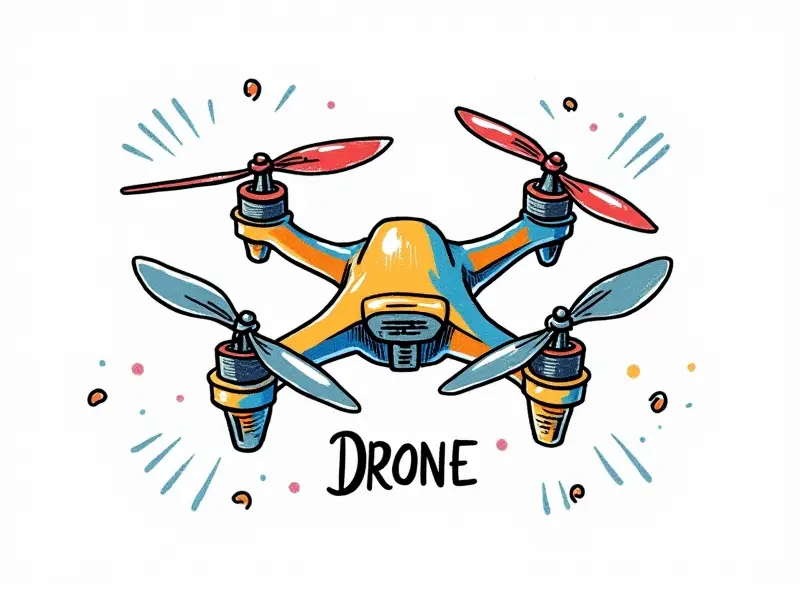FPV drone weight limits

FPV Drone Weight Limits: Why It Matters and How to Navigate Regulations
Why FPV Drone Weight Matters in Flight
The weight of an FPV (First Person View) drone plays a critical role in its performance, maneuverability, and overall flight experience. A lighter drone can achieve higher speeds and better agility, making it ideal for racing or complex aerial maneuvers. Conversely, heavier drones may offer more stability and payload capacity but at the expense of speed and responsiveness.
Understanding the impact of weight on your FPV drone is crucial for optimizing its performance and ensuring compliance with legal regulations. The right balance between weight and functionality can significantly enhance your flying experience while adhering to strict aviation rules.
Optimal Weight Range for FPV Drones
The ideal weight range for an FPV drone depends on the intended use, such as racing or filming. For racing drones, a lighter frame is preferred, typically ranging from 300 grams to 500 grams (including battery and camera). This range allows for high-speed flight and quick turns.
For filming drones, which may require additional payload capacity for cameras and other equipment, the weight can be slightly higher. However, it's important to stay within the legal limits set by aviation authorities to avoid penalties or restrictions.
FPV Racing: Understanding Weight Restrictions
In FPV racing competitions, there are often specific weight restrictions that participants must adhere to. These rules ensure fair competition and maintain safety standards for all racers. Typically, race drones should not exceed 500 grams (including battery) to achieve optimal performance.
Complying with these regulations is essential for participation in sanctioned races. Ignoring the weight limits can result in disqualification or penalties.
Legal Flying: FPV Drone Weight Caps
The Federal Aviation Administration (FAA), Civil Aviation Authority (CAA) in the UK, and other aviation authorities worldwide impose strict regulations on drone weights to ensure safe operation. In many countries, drones weighing more than 250 grams are subject to additional registration requirements.
It's crucial for FPV pilots to familiarize themselves with these rules to avoid legal issues and maintain compliance during flights.
Setting Boundaries: FPV Drone Weights
To set boundaries for your FPV drone, consider the intended use case. For racing drones, focus on achieving a balance between weight and performance that maximizes speed and maneuverability. For filming or photography drones, prioritize stability and payload capacity while staying within legal limits.
The Impact of Weight on FPV Drone Performance
A drone's weight directly affects its flight characteristics such as lift-to-drag ratio, battery efficiency, and overall agility. A lighter frame reduces the load on motors and batteries, allowing for higher speeds and longer flight times. However, this comes at the cost of reduced payload capacity.
Conversely, a heavier drone may offer more stability but will consume more power and reduce maneuverability. Balancing these factors is key to achieving optimal performance tailored to your specific needs.
Navigating FPV Drone Regulations by Weight
To navigate the complex landscape of FPV drone regulations, it's essential to consult local aviation authorities for specific guidelines on weight limits and operational restrictions. Understanding these rules helps you avoid legal penalties and ensures safe flying practices.
Always check for updates in legislation as new technologies emerge and regulations evolve over time.
Keep It Light: FPV Drone Weight Guidelines
To keep your FPV drone light, focus on using lightweight materials such as carbon fiber or high-strength plastics for the frame. Optimize electronic components by selecting efficient motors, ESCs (Electronic Speed Controllers), and batteries that provide optimal power-to-weight ratios.
Lightweight Frame Materials
- Carbon Fiber: Provides a strong yet lightweight structure ideal for racing drones.
- Plastic: High-strength plastics offer durability and reduced weight, suitable for both racing and filming applications.
Battery Efficiency Tips
- Select High-Capacity Batteries: Use batteries with high energy density to maximize flight time without adding excessive weight.
- Optimize Motor and ESCs: Choose components that provide the best power-to-weight ratio for your specific use case.
Avoiding Penalties: FPV Drone Weight Compliance
To avoid penalties associated with non-compliance, always verify that your drone meets all legal weight requirements before flying. Familiarize yourself with local regulations and ensure proper registration if necessary.
Regularly check for updates to these rules as they can change due to technological advancements or safety concerns.
Flying Under the Radar: FPV Weight Limits
Maintaining compliance with weight limits allows you to fly your drone without drawing unwanted attention from authorities. By adhering to regulations, you ensure a safe and enjoyable flying experience while respecting airspace rules.
Staying Below Legal Thresholds
- Monitor Drone Weight: Regularly check the weight of your drone to ensure it remains within legal limits.
- Use Lightweight Components: Select components that offer optimal performance without exceeding weight restrictions.
Lighter is Better: FPV Drone Weight Tips
To achieve a lighter and more efficient FPV drone, consider the following tips:
- Minimize Unnecessary Components: Remove or replace heavy parts with lightweight alternatives.
- Select Efficient Motors and ESCs: Opt for components that provide optimal power-to-weight ratios.
- Use High-Capacity Batteries: Choose batteries with high energy density to maximize flight time without adding excessive weight.
Conclusion
Maintaining the right balance between weight and performance is essential for achieving optimal results in FPV drone flying. By understanding legal restrictions, optimizing your drone's design, and adhering to best practices, you can enjoy a safe and enjoyable flying experience while staying compliant with aviation regulations.

